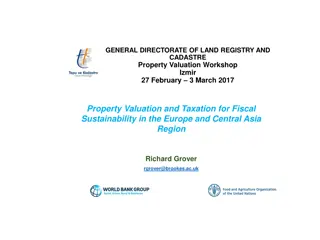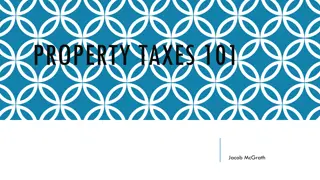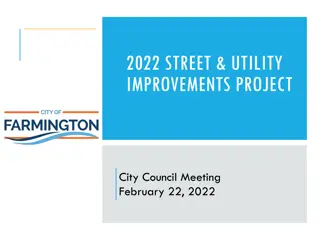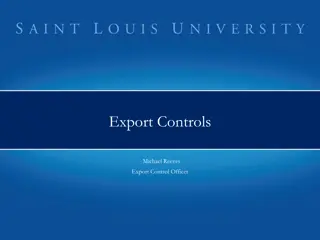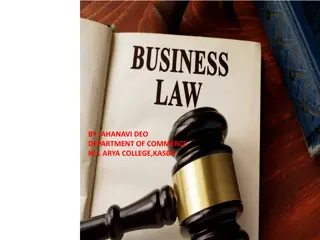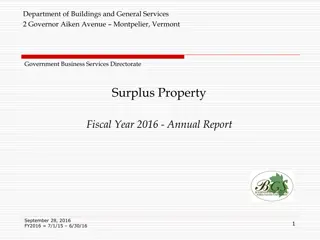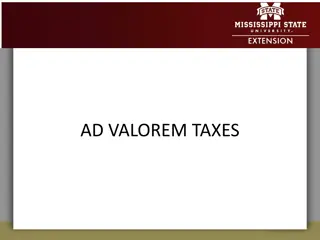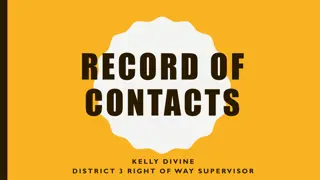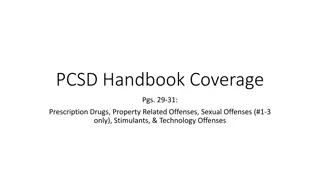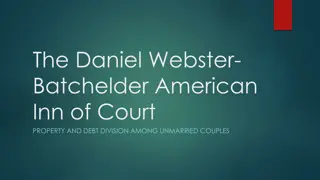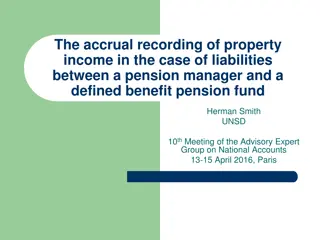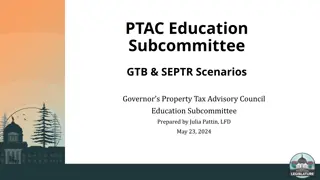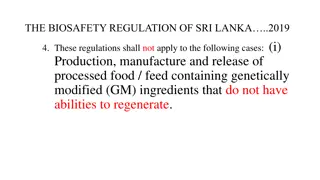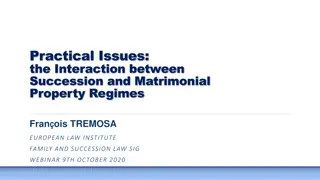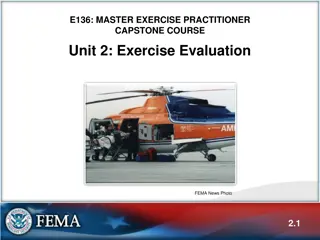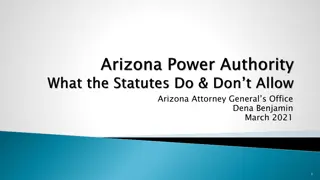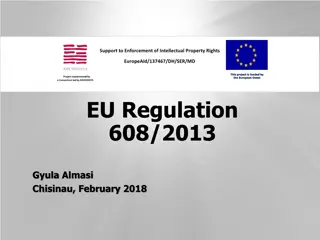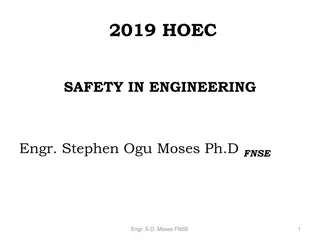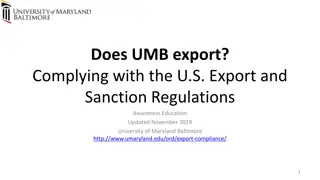Understanding Tangible Property Regulations and Improvements
Explore the guidelines presented by David W. Jennings, CPA regarding tangible property regulations and determining the unit of property. Learn about amounts paid to improve tangible property, how to determine the unit of property, specifics related to buildings, and definitions of improvements and betterments in the context of tax regulations.
Download Presentation

Please find below an Image/Link to download the presentation.
The content on the website is provided AS IS for your information and personal use only. It may not be sold, licensed, or shared on other websites without obtaining consent from the author. Download presentation by click this link. If you encounter any issues during the download, it is possible that the publisher has removed the file from their server.
E N D
Presentation Transcript
Tangible Property Regulations Presented by David W. Jennings, CPA
Tangible Property Regulations Determining the unit of property Improvement Standards
Amounts Paid To Improve Tangible Property Treas. Reg. 1.263 (a)-3 Determine the unit of property Apply the improvement standards Consider the routine maintenance safe harbor
Determine The Unit of Property (UoP) General rule is that all components that are functionally interdependent are a single UoP o If taxpayer depreciates a component of a UoP under a different asset class from UoP, then component is the UoP Special rules o Buildings o Leased property o Plant property o Network assets
UoP Buildings UoP is the building and structural components To determine if UoP is improved, look at each of the following: o Building systems: Heating, ventilation, and air conditioning systems (HVAC) Plumbing systems Electrical systems All escalators All elevators Fire protection and alarm systems Security systems Gas distribution systems Other structural components identified in published guidance o Building structure, which is defined as the building and its structural components (other than the sub-systems above)
What Is An Improvement? An improvement is defined under 1.263(a) 3(d) as an amount paid after the property is placed in service which: o Betterment Results in a betterment to the UoP o Adapts the UoP to a new or different use o Restores the UoP B-A-R = Improvement (Capitalize)
What Is A Betterment? Corrects a material condition or defect existing prior to the taxpayer s acquisition Is a material addition (enlargement, expansion, extension) Is a material increase in capacity, productivity, efficiency, strength, quality, or output (Ex. Replace asphalt shingles with new solar shingles) o Enhancement due to technological advancements not necessarily betterment. (ex. HVAC equipment is always going to be more efficient. Is it comparable?) Material IRS has not defined this!
Adaption If cost is incurred to adapt UOP to a use different than when originally placed in service Example A converts its manufacturing building into a showroom for its business Removes and replaces various structural components to provide a better layout for the showroom and its offices Must capitalize the amount paid to convert the building into a showroom because the conversion to a showroom is not consistent with A's ordinary use of the building structure at the time it was placed in service
What Is A Restoration? 1.263(a)-3(k) Restoration only if: Returns UOP to ordinary operating condition if in state of disrepair & no longer functional Replacement of major component or substantial structural part Rebuilds UOP to like new condition after end of class life o Class life 168(g)(2) and (3) for purposes of the alternative depreciation system Replaces component deducted as loss; or adjusted basis taken into account for loss/gain Repair component after casualty loss/event if basis adjusted
Restoration For Buildings It is a replacement of a Major Component or Substantial Structural Part if: Replacement includes parts that comprise a major component or a significant portion of a major component of a building or building system Must first identify the major component of a building system. Then see if a significant portion was replaced
Definitions Structural Components lots of things. Walls, windows, doors, roof etc. See reg 1.48-1(e)(2) Building System Nine items listed (HVAC, Plumbing, etc.) Major Component Performs a discrete and critical function Substantial Structural Part Large portion of the physical structure
Unit of Property Common Examples of Building System Components Building Unit(s) of Property and Common Components Heating Ventilation and Air HVAC Building Structure Plumbing Systems Electrical Systems All Elevators Roof Walls Floors Ceilings Foundation Motors Compress Boilers Furnace Chillers Pipes Ducts Radiators Pipes Drains Valves Sinks Bathtubs Toilets Water and Sanitary Sewer Collection Equip. Water Utility Equip. Wiring Outlets Junctions Lighting Fixtures & Connectors Elec. Utility Equip. Elevator boxes Control Equip. Cables and Movement Equip. Fire Protection and Alarm Systems Security Systems to Protect Building and Occupants Gas Distribution System All Escalators Rails Steps Supporting Equip. Controls Sensing & Detection Devices Computer Controls Sprinkler Heads & Mains Piping & Plumbing Alarms Control Panels Signage Window & Door Locks Security Cameras Recorders Monitors Motion Detectors Security Lighting Alarms Entry Access Pipes Gas Equip.
Restoration Examples HVAC Systems Example # 16 Office building with one HVAC System Comprised of 3 furnaces, 3 AC units, and duct work throughout the building 1 Furnace breaks down, replaced with a new furnace The three furnaces together perform a critical function in operation of HVAC system 3 Furnaces = Major Component However replacing a single furnace is not a significant portion of this major component of the HVAC System Not a restoration of the UOP (HVAC system)
Restoration Examples HVAC Systems Cont. Example # 17 Office building with one HVAC System Comprised of 1 chiller, 1 boiler, cooling tower, etc. Chiller is replaced with comparable unit Chiller functions to cool water to generate AC Chiller performs a discrete and critical function of HVAC system Must Capitalize
Major Component/Substantial Structural Part Examples Not a Major Component/Substantial Structural Part Power switch assembly of drill press Major Component/Substantial Structural Part Engine and cab of truck tractor Waterproof membrane of retail store roof (comparable to original membrane) Entire roof of manufacturing building (including decking, insulation, asphalt, and various coatings) 3 of 10 rooftop units in an office building HVAC system (e.g., 10 RTUs, system controls, duct work) Chiller unit in office building HVAC system (e.g., chiller, boiler, pumps, duct work, diffusers, air handlers, outside air intake, cooling tower) 30% of the wiring within a building's electrical system All wiring within a building's electrical system
Major Component/Substantial Structural Part Examples Cont. Major Component/Substantial Structural Part Not a Major Component/Substantial Structural Part All toilets and all bathroom sinks (not including associated piping) in all restrooms in 3-floor retail building 8 of 20 restroom sinks (not including associated piping) in 3-floor retail building 100 of 300 exterior windows 200 of 300 exterior windows o 300 windows represent 25% of building surface area o 300 windows represent 25% of building surface area 1 of 4 elevators in office building Wood floors in all public areas (e.g., lobby, hallways, meeting rooms, ballroom, etc.) of hotel (single elevator is not gain-or-loss property)
Routine Maintenance Safe Harbor Deductible must reasonably expect (at time UOP is placed in service) to perform more than once during class life (alternative depreciation system (ADS)) o Safe harbor does not apply to Betterments, Adaptations, or some Restorations (see Reg. 1.263(a) 3(i)(3)) Consider recurring nature of activity, industry practice, manufacturers recommendations, and taxpayer's experience with similar property FOR BUILDINGS: Deductible must reasonably expect to perform more than once during the ten year period from when the building system was placed in service


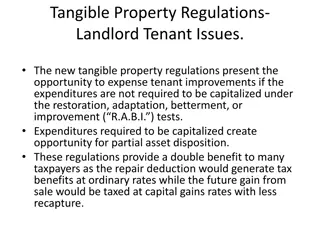
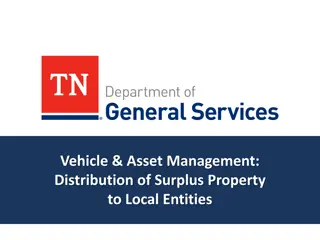
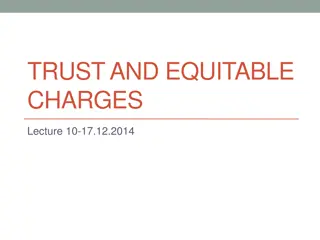
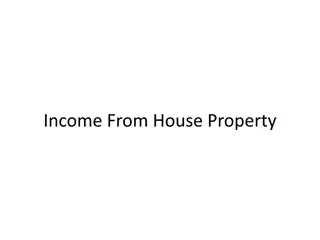

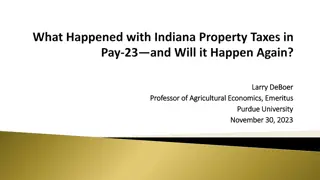

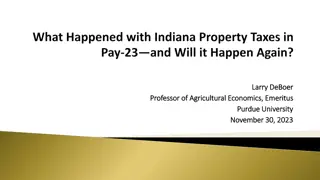
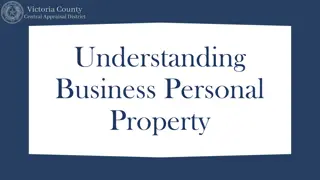

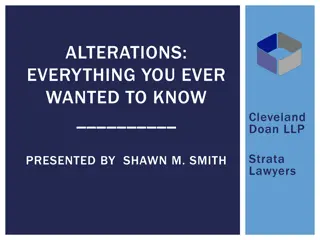
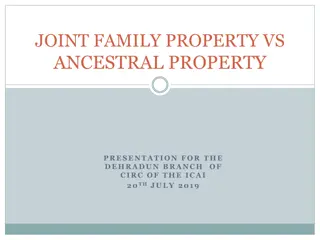

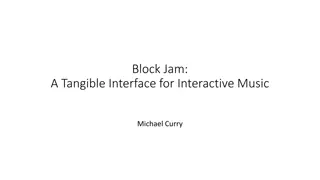
![Property Settlements in Family Law: Case Study of Stamatou & Stamatou [2022] FedCFamC1F 241](/thumb/63303/property-settlements-in-family-law-case-study-of-stamatou-stamatou-2022-fedcfamc1f-241.jpg)

